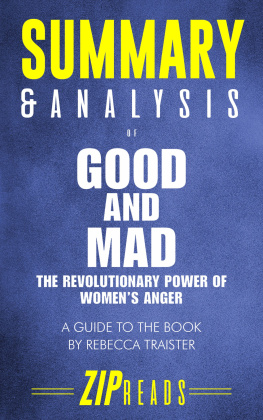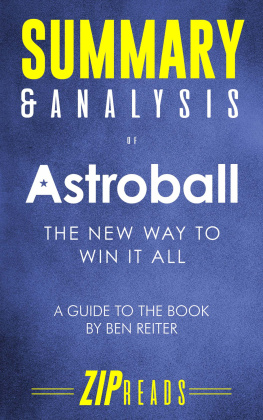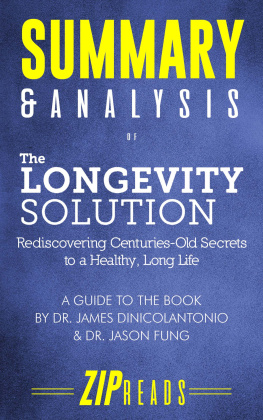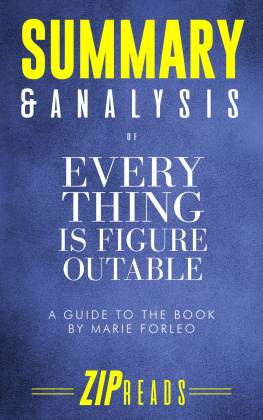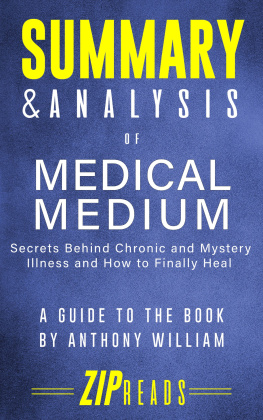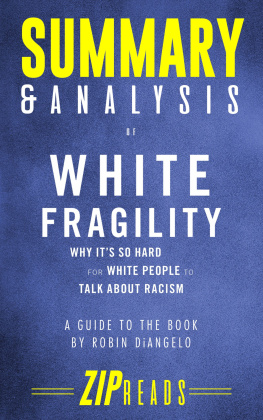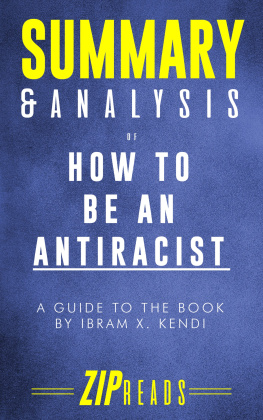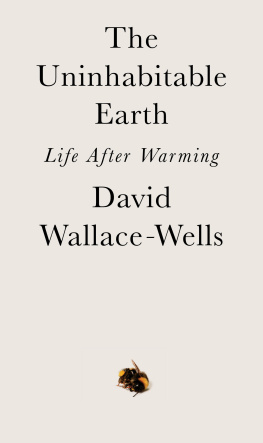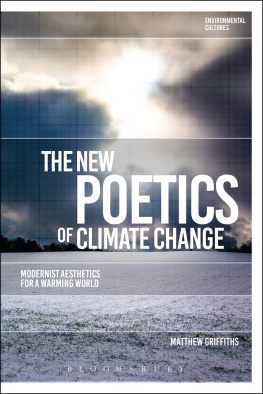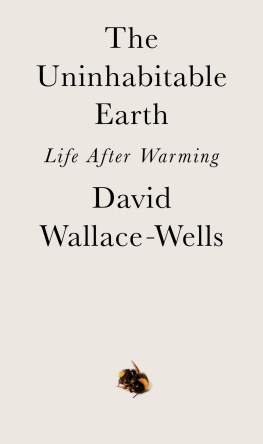
NOTE: This book is a summary and analysis and is meant as a companion to, not a replacement for, the original book.
Please follow this link to purchase a copy of the original book: https://amzn.to/2C3twPl
Copyright 2019 by ZIP Reads. All rights reserved. This book or parts thereof may not be reproduced in any form, stored in any retrieval system, or transmitted in any form by any meanselectronic, mechanical, photocopy, recording, or otherwisewithout prior written permission of the publisher, except as provided by United States of America copyright law. This book is intended as a companion to, not a replacement for the original book. ZIP Reads is wholly responsible for this content and is not associated with the original author in any way.
TABLE OF CONTENTS
SYNOPSIS
The already-famous first line of The Uninhabitable Earth: Life After Warming starts, It is worse, much worse, than you think. The plea for a change in perspective on climate change continues with all the reasons why all this is, shockingly, true.
Part I is candid about possible reasons we have become both complicit in climate change and complacent in finding solutions. Myth-busting left, right, and center, it quickly becomes obvious that we have missed the signals and are casually sailing through melting iceberg fields towards certain disaster.
Part II then delves into the specific areas most affected by climate change; namely; heat, chronic hunger, fresh water shortages, fire, extreme weather events, oceanic peril, contaminated air, disease, economic disaster, and other undesirable effects.
Part III dallies on further complacency, ethics, politics, greed, and sufferingwith an end to finding plausible solutions (or rather action plans, since the situation is far beyond a quick remedy or blanket repair statements).
Part IV ends with the idea this all depends on us. Its a bet on the actions of men to forestall their extinction. Personally, he hopes humans will care enough to stop the destruction of the only place they will ever be able to call home.
PART 1: CASCADES
It begins with a jolting discourse on global warming aimed to grab the readers attention in an overwhelming (and saturated) topic. The words climate change lull us into complacency and boredom; its too big to understand. Yet, Part I makes it clear our understanding is vital because the effects of global warming are already happening, here and now.
Key Takeaway: Global warming delusions have lulled us into complacency.
Adamant about breaking through societys delusions and denial of climate change, Wells dives feet first into the burgeoning carbon footprints of a connected society. He challenges readers on their pervasive pop-culture notions; like the Arctic melts, sea levels, and the recent surge of natural disasters as recently as the California fires of 2018.
These delusions are juxtaposed with a good dose of statistical evidence and trend analysis to build an accessible staircase towards the (surprisingly scary) bigger picture. Even as a self-proclaimed optimist, his message is clear: The evidence of global warming upon our daily lives is (already) overwhelming and will rapidly worsen if the pace of the last three decades continues.
Key Takeaway: There is clear evidence of climate change available.
Despite the scientific proof of climate change, the public narratives have focused on whether, or not, climate change is happening at all. The section implores readers to open their eyes and to stop ignoring irrefutable evidence that climate change is not only real but has already begun to change the earth around us in significant ways.
Countless changes to global dialogue have resulted in more extreme views and urgent recalculation. The rapid trajectory towards a two-degree rise in core temperature, for example, has recently become a desirable goal in the 2016 Paris agreement. Only a few years before, a two-degree rise was unthinkable, representing the tipping point of disaster when discussed twenty years ago.
There is also the sad fact that the countries emitting the most carbon are not the countries who will suffer the ill-effects first, or hardest. They will by no means be excluded or protected, though, despite better infrastructure to cope with whats coming. We will all suffer, more for each month of carbon emissions we continue to produce.
The recent spate of unprecedented natural events ripping through communities will become commonplace sooner than we thinkunabated wildfires, powerful mudslides, unbearable (even lethal) temperatures, and food and water shortages like nothing we could have imagined.
Key Takeaway: We are all responsible for the change that is needed.
The chapter also explores why we are unmoved and ignorant in a world with complete access to information. The main conclusion is climate change is overwhelming, a mega-topic, hard to understand and even more difficult to apply significant changes to our daily routines.
It is easy to point to mammoth corporations as the reason behind the carbon emission problem, thereby exonerating ourselves. We are only individuals, but we also flick switches every few minutes, drive to work, buy the products and services of the aforementioned corporations, and support the electricity-sapping mining of cryptocurrencies to feed our insatiable distrust of our institutions.
Key Takeaway: Natures feedback loops are not yet fully understood, and the cascading effects unknown.
The tone is bleak and the abundance of even if statements throughout the narrative points to the gravity of the climate changes already in play all around us.
Even if the global community somehow turns things around and even if we end up successfully implementing negative emissions prospects (by some miracle), the effects of what we have already placed into the atmosphere, especially since the 1990s, will remain beyond our worst nightmares.
Even if we hit the Paris target of two degrees warming (being the lowest level now thought to be possible on our current track), life on earth has already been irreversibly changed for the worse. Our progeny will be seeing a more extreme version of what we are in this lifetime, but it is there already, brooding as it builds up its vendetta against humankind.
Public discourse refers to the knock-on effects of carbon emissions (which scientists call feedback). It is painfully clear that the full extent of these cascading effects is uncertain. We barely understand how the natural world works, much less a complex climate system, which keeps us alive.
The problem is we cant predict how people will respond to change current emissions, either, and it is this crucial factor which is the biggest determination of how quickly (or slowly) uncomfortable climate changes will occur in the next few decades.
Key Takeaway: International cooperation may not be enough.
Alarmingly, there has been stagnation in most (probably all) countries who have signed agreements like the 2016 Paris accord. No progress has been made, not nearly enough to count towards anything. Countries have made a noise on designated days of the year and then gone to bed as if nothing has changed.
Individuals point fingers at big business, countries point fingers at other nations, and nothing changes. The Intergovernmental Panel on Climate Change (IPCC) has given business-as-usual predictions regarding temperature rises, and it isnt pretty. Two degrees is bad enough but each day the world sits in discussion instead of in action, three, even four degrees looms ever closer to the 2100 line in the sand.
Next page

